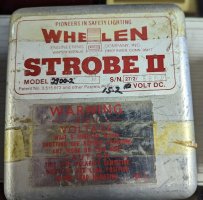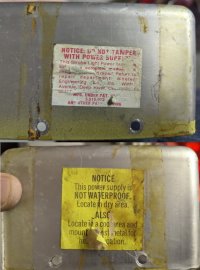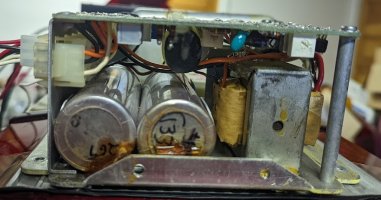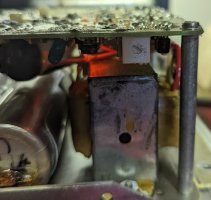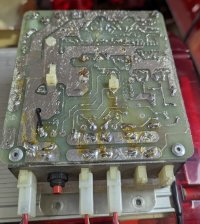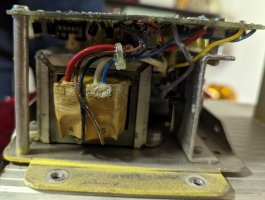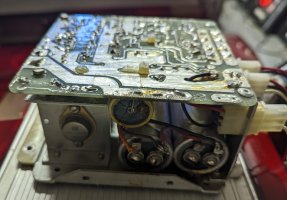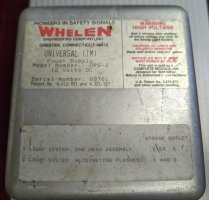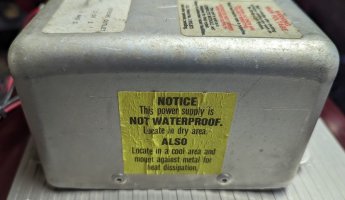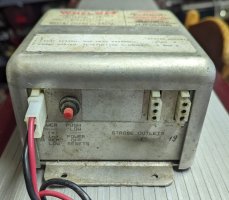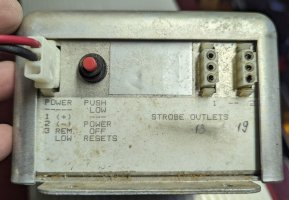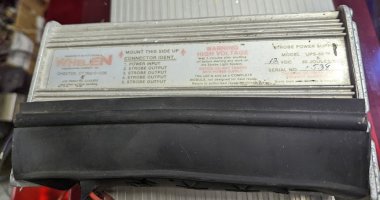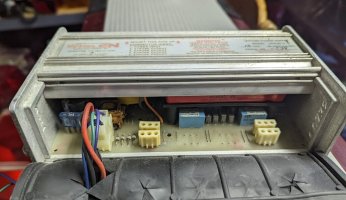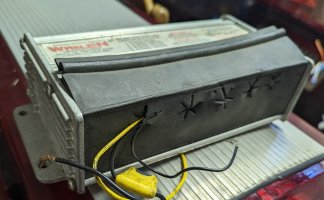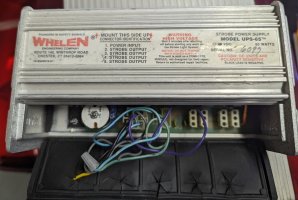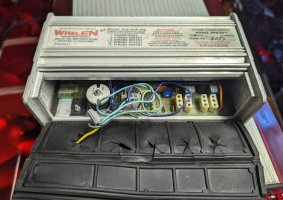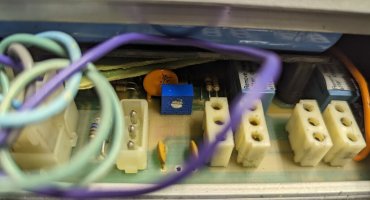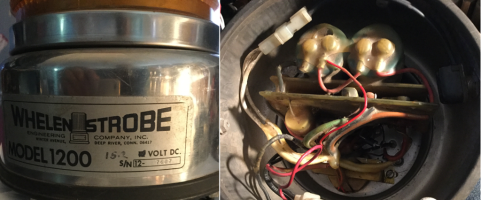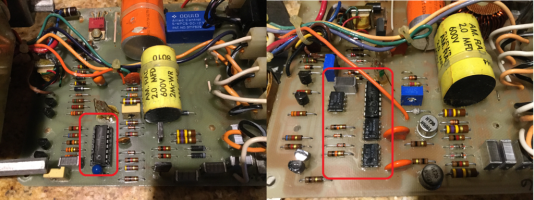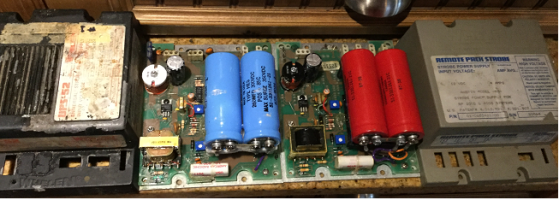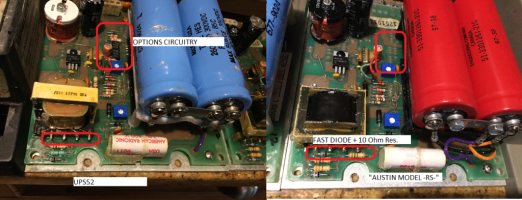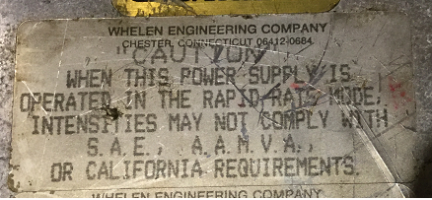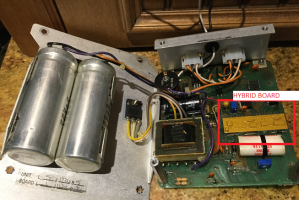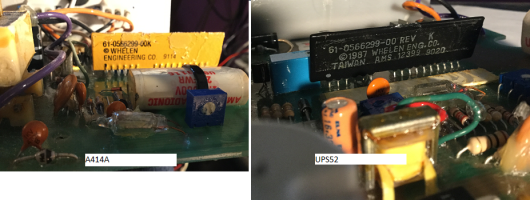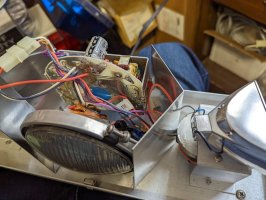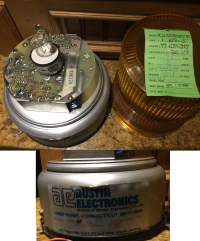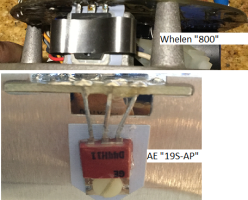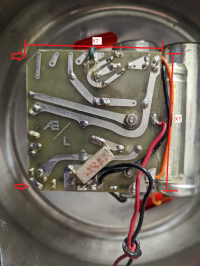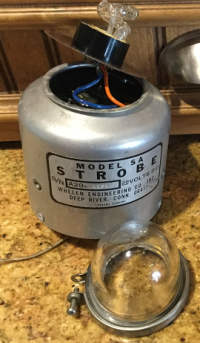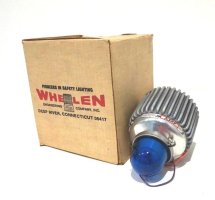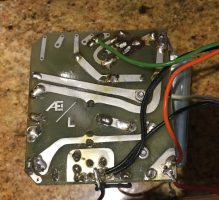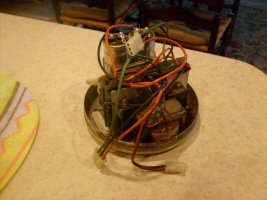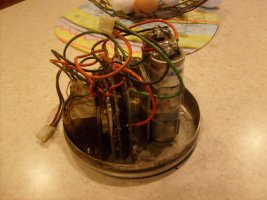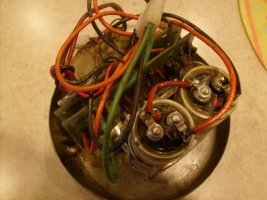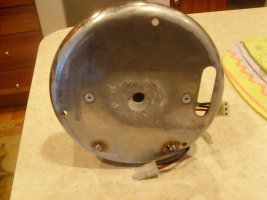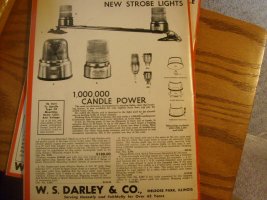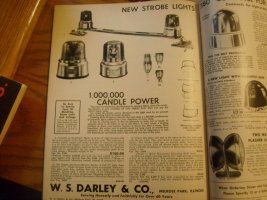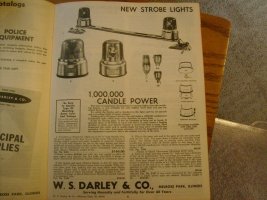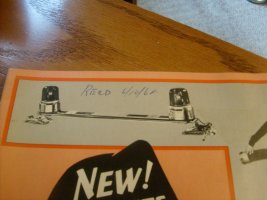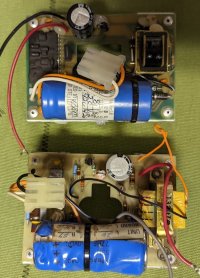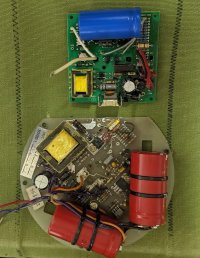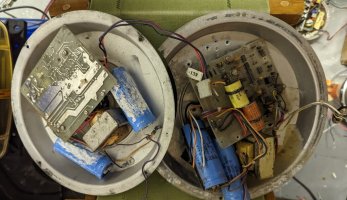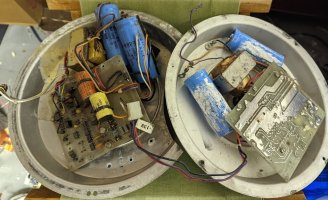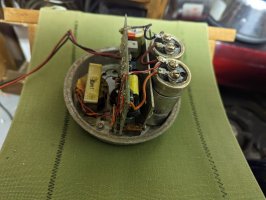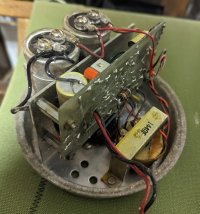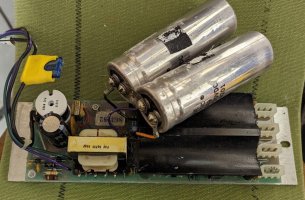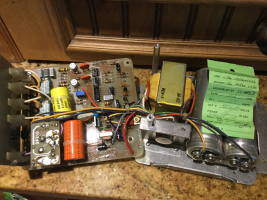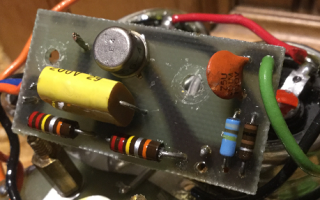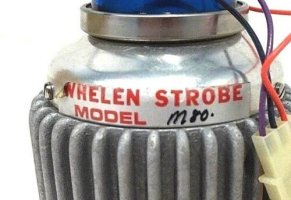Here's a UPS 52 (made ~1990) and an "AUSTIN MODEL -RS-" (made ~91):
View attachment 236091
Zooming in the boards:
View attachment 236092
The UPS-52 was double-flash two-outlet PS with two user-exposed options:Low-power and "Rapid Rate" flash pattern which seems like double flash with no extra time between sides.
The "-RS-" is double-flash but doesn't have any user-exposed options (not even low-power)
Both boards seem very similar but the option-sensing circuitry is simply not built out in the "-RS-". While the power transformer looks different, the part numbers appear the same ("PAC 66207") however the newer board has an extra diode and resistor.
Interestingly, the options circuitry uses the same "H11A1" opto-coupler as the Diagnostics I/O board "01-0266955-00C" we encountered recently.
Also of interest, it looks like the UPS52 and "-RS-" share their hybrid board with a "Galls"-rebranded DashMasterII (ca. 2000):
View attachment 236094
They look very similar and if they are identical, then one should be able to actuate the "Rapid-Rate".
(I do an experiment)
Of course! If I turn the speed knob to its max position on the DashMasterII, it _is_ effectively "Rapid Rate" where there's no additional time between each double-flash (i.e. LLRRLLRR rather than LL...RR...LL...RR). Same for the "-RS-"
After measuring resistance at the speed knob, the higher the resistance, the slower flash the frash-rate.
So the only thing special in the UPS52 (compared to the "-RS-" is a few more components soldered in to expose a direct-route to lower the resistance whatever's going to PIN # 3 of the hybrid-board...and the equivalent for low-power control.
Not sure yet what the extra "fast diode" and resister do in the "-RS-".
Maybe the biggest difference between the two was the heavy aluminum housing for the UPS52 compared to the simple plastic housing on the "-RS-" (and maybe the price

)
(edit): Also, there was an interesting little sticker on the bottom of the UPS52:
View attachment 236096
